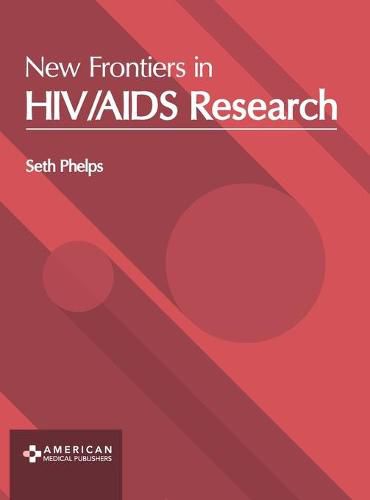Readings Newsletter
Become a Readings Member to make your shopping experience even easier.
Sign in or sign up for free!
You’re not far away from qualifying for FREE standard shipping within Australia
You’ve qualified for FREE standard shipping within Australia
The cart is loading…






HIV transmission occurs through sexual contact, vertical transmission from mother to baby, and through exposure to infected body fluids and tissues. The viral load of an HIV-infected person is an important factor in mother to child and sexual transmission. A person in the later stages of infection is more likely to transmit infection compared to another in the initial stages. In many parts of the world, HIV/AIDS is a chronic condition rather than a terminal disease. Without treatment, an individual can survive for an average of 9 to 11 years, depending on the type of HIV, and between 6 to 19 months after the diagnosis of AIDS. Research in HIV/AIDS explores the clinical management of the disease as well as investigates the nature of HIV as an infectious agent. Research is also being undertaken to develop HIV vaccines, antiretroviral drugs and microbicides for sexually transmitted diseases. Other strategies such as circumcision, and pre-exposure and post-exposure prophylaxis are being studied for their role in lowering HIV risk. This book includes some of the vital pieces of work being conducted across the world, on various topics related to HIV/AIDS research. It provides significant information of this condition to help develop a good understanding of AIDS, its modes of transmission and its management and control. It aims to equip students and experts with the advanced topics and upcoming concepts in this domain.
$9.00 standard shipping within Australia
FREE standard shipping within Australia for orders over $100.00
Express & International shipping calculated at checkout
HIV transmission occurs through sexual contact, vertical transmission from mother to baby, and through exposure to infected body fluids and tissues. The viral load of an HIV-infected person is an important factor in mother to child and sexual transmission. A person in the later stages of infection is more likely to transmit infection compared to another in the initial stages. In many parts of the world, HIV/AIDS is a chronic condition rather than a terminal disease. Without treatment, an individual can survive for an average of 9 to 11 years, depending on the type of HIV, and between 6 to 19 months after the diagnosis of AIDS. Research in HIV/AIDS explores the clinical management of the disease as well as investigates the nature of HIV as an infectious agent. Research is also being undertaken to develop HIV vaccines, antiretroviral drugs and microbicides for sexually transmitted diseases. Other strategies such as circumcision, and pre-exposure and post-exposure prophylaxis are being studied for their role in lowering HIV risk. This book includes some of the vital pieces of work being conducted across the world, on various topics related to HIV/AIDS research. It provides significant information of this condition to help develop a good understanding of AIDS, its modes of transmission and its management and control. It aims to equip students and experts with the advanced topics and upcoming concepts in this domain.